
Consumer Insights
Uncover trends and behaviors shaping consumer choices today
Procurement Insights
Optimize your sourcing strategy with key market data
Industry Stats
Stay ahead with the latest trends and market analysis.
The Expert Market Research report, titled “Para Nitro Aniline Manufacturing Plant Project Report 2026 Edition: Industry Trends, Capital Investment, Price Trends, Manufacturing Process, Raw Materials Requirement, Plant Setup, Operating Cost, and Revenue Statistics” includes various aspects that are critical for establishing a para nitro aniline plant. These include infrastructure requirements, transportation requirements, utility specifications, and financial and economic analysis, among others.
The demand for para nitro aniline is increasing due to the growing need for synthetic dyes in the textile industry. As fashion trends evolve and the global population expands, the demand for a wide range of textiles has surged, leading to an increase in the production of dyes that use para nitro aniline as a crucial intermediate. In 2024, India’s textile sector attracted significant foreign direct investment (FDI). Cotton production reached approximately 30.72 million bales for the 2024-25 season, ensuring a steady supply for manufacturers. Additionally, the production of man-made fibre filament yarn has increased by 20%. Silk production is estimated at 32,000 tonnes and jute production at 1.5 million tonnes. On the trade front, textile exports have contributed approximately USD 34.4 billion to the economy. Textile sector expansion in India, which is a major hub for textile manufacturing, directly correlates with the rising demand for this chemical.
Other elements to consider while establishing a para nitro aniline plant include raw material sourcing, workforce planning, and packaging. The production of para nitro aniline (PNA) primarily relies on key raw materials such as 4-nitrochlorobenzene and ammonia. 4-nitrochlorobenzene is typically sourced through the nitration of chlorobenzene, a process that involves treating chlorobenzene with a mixture of nitric and sulfuric acids. The global production of chlorobenzene is significant, with major producers located in China, India, and the United States, contributing to a robust supply chain for 4-nitrochlorobenzene. Ammonia, on the other hand, is widely produced via the Haber-Bosch process, which synthesizes ammonia from nitrogen and hydrogen gases under high pressure and temperature. Ammonia is readily available in large quantities due to its critical role in agriculture and industry. These raw materials are essential for the efficient production of para nitro aniline, which serves as an important intermediate in the manufacture of dyes, pigments, and pharmaceuticals.
Moreover, to help stakeholders determine the economics of a para nitro aniline plant, project funding, capital investments, and operating expenses are analyzed. Projections for income and expenditure, along with a detailed breakdown of fixed and variable costs, direct and indirect expenses, and profit and loss analysis, enable stakeholders to comprehend the financial health and sustainability of a business. These projections serve as a strategic tool for evaluating future profitability, assessing cash flow needs, and identifying potential financial risks.
Para nitro aniline, also known as 4-nitroaniline, is an organic compound with the formula C6H6N2O2. It appears as a yellow solid and is primarily used as an intermediate in the production of dyes, pharmaceuticals, and antioxidants. Its synthesis typically involves the nitration of aniline, resulting in the introduction of a nitro group at the para position relative to the amino group. The compound was first synthesised in the late 19th century and gained prominence as a precursor for synthetic dyes. Its industrial importance grew with the development of the dye industry in the early 20th century, particularly for producing azo dyes like Para Red.
Para nitro aniline (PNA) is a yellow crystalline solid with a molecular formula of C6H6N2O2. It has a melting point of 147-148 °C, a boiling point of 332 °C, and a density of 1.437 g/cm cube. It is slightly soluble in water and more soluble in organic solvents like ethanol. PNA has a faint, ammonia-like odour and is combustible. However, when heated with sulfuric acid, PNA can polymerise explosively into a rigid foam, posing a hazard. Industrially, PNA is consumed as a precursor to p-phenylenediamine, an important dye component.
The production process of para nitro aniline begins with the preparation of raw materials, specifically nitrobenzene, which is produced by the nitration of benzene using a mixture of nitric acid and sulfuric acid. The next step is hydrogenation, where nitrobenzene is subjected to hydrogen in the presence of a catalyst at elevated temperatures, resulting in the formation of aniline. Following this, aniline undergoes nitration, again using a mixture of nitric and sulfuric acids, to introduce a nitro group at the para position, yielding para-nitroaniline. After the nitration process, the product is separated from the reaction mixture, and further purification techniques are employed to obtain pure para nitro aniline.

Read more about this report - REQUEST FREE SAMPLE COPY IN PDF
1. Nitration of Aniline
The process starts with the nitration of aniline to form para nitro aniline.
Step 1: Acetylation of Aniline
Step 2: Nitration of Acetanilide
Step 3: Hydrolysis of Para Nitro Acetanilide
As a key intermediate in dye manufacturing, para nitro aniline is crucial for creating vibrant colours used in textiles and coatings. Additionally, it serves as a precursor for various pharmaceutical compounds, enhancing its importance in the healthcare sector. The growth of the automotive and construction industries further propels demand for para-nitroaniline, as it is used in rubber chemicals that improve the performance and durability of products. Moreover, increasing investments in research and development, along with technological advancements in production processes, are expected to foster market growth.
A detailed overview of production cost analysis that evaluates the manufacturing process of para nitro aniline is crucial for stakeholders considering entry into this sector. Furthermore, stakeholders can make informed decisions based on the latest economic data, technological innovations, production process, requirements of raw materials, utility and operating costs, capital investments by major players, pricing strategies, and profit margins. For instance, World Health Organization (WHO) estimates that approximately 50,000 to 90,000 new cases of visceral leishmaniasis (VL) are reported annually, although only 25-45% of these cases are officially documented. The disease is endemic in 80 countries, with about 500,000 new cases and 50,000 deaths attributed to VL each year. The majority of VL cases occur in seven countries: Brazil, Ethiopia, India, Kenya, Somalia, South Sudan, and Sudan, which collectively account for over 90% of global cases. The rising prevalence can affect producers of para nitro aniline through increased demand for related compounds, regulatory changes, shifts in market focus, potential collaborations with pharmaceutical companies, and broader economic impacts associated with healthcare funding and research initiatives.
Below are the sections that further detail the comprehensive scope of the prefeasibility report for a para nitro aniline production plant:
Market Dynamics and Trends: Factors such as expansion of pharmaceutical industries are significantly affecting market conditions in the para nitro aniline sector. The pharmaceutical industry significantly contributes to the rising demand for para nitro aniline, as it is used in the production of drugs for treating infections, including anti-leishmanial medications. Para nitro aniline's chromogenic properties are leveraged in biochemical research for enzyme assays and colorimetric determinations, which are critical in drug development processes. As the global focus on healthcare improves and new therapeutic agents are introduced, the need for effective intermediates like para nitro aniline is expected to increase. Understanding these demands and trends helps businesses align their production plans in the para nitro aniline market.
Profiling of Key Industry Players: Leading manufacturers of para nitro aniline (PNA) include Aarti Industries Limited, which is recognised as the world's largest supplier, accounting for 72% of total shipments with 252 shipments reported. Following Aarti, Premier Synthochem Industries Private Limited holds an 11% share with 39 shipments, while Sadar Biotech Private Limited contributes 5% with 19 shipments. Recently, Aarti Industries has expanded its production capabilities and market reach.
Economic Analysis: Capital expenditure (CAPEX) analysis provides stakeholders the knowledge about required investments in advanced technologies, efficient machinery, and necessary infrastructure. Investing in high-capacity mixing equipment, such as a continuous mixer or high-shear mixer, can improve production efficiency by 20-30%. Investing in energy-efficient systems, such as combined heat and power (CHP) systems could reduce energy consumption by up to 30%, as these systems use waste heat from production processes to generate electricity and provide heating.
Fluctuations in para nitro aniline (PNA) prices are influenced by the cost of raw materials, particularly 4-nitrochlorobenzene and ammonia, which are essential for PNA production. Recent trends indicate price changes in the aniline market, with North America experiencing a 1.7% decrease to USD 1.19/KG and Europe seeing a 1.9% decline to USD 1.57/KG as of December 2024. Additionally, the balance between supply and demand plays a crucial role; increased demand for PNA, especially in pharmaceutical applications like antileishmanial drugs, can drive prices higher, while oversupply may lead to reductions. Broader economic conditions, including inflation rates and currency fluctuations, also impact pricing dynamics. Furthermore, regulatory changes imposing stricter environmental guidelines can raise production costs for manufacturers, which may be passed on to consumers. These factors create a complex pricing environment for para nitro aniline, necessitating careful monitoring by producers.
Establishing a para nitro aniline manufacturing facility requires a comprehensive financial investment that encompasses various elements critical to the project's success. The following sections detail these components:
Projected profit margins and effective product pricing strategies improve overall profitability. Manufacturers might target a profit margin of around 20-30%, achieved through strategic pricing based on raw material costs and prevailing market demand. Effective pricing strategies should consider fluctuations in raw material prices and competitive positioning within the market.
The production of para-nitro aniline (PNA) is governed by several key regulatory frameworks. In the U.S., the Toxic Substances Control Act (TSCA) mandates safety reporting, while the EU's REACH regulation requires comprehensive chemical registration. OSHA standards ensure workplace safety, and EPA regulations govern emissions and waste management. Additionally, local health regulations set exposure limits and disposal guidelines. Compliance with international standards, such as ISO certifications, further enhances product quality and safety in PNA manufacturing.
This prefeasibility report aims to equip potential investors and existing manufacturers with crucial insights to make informed decisions in the para nitro aniline industry.




*While we strive to always give you current and accurate information, the numbers depicted on the website are indicative and may differ from the actual numbers in the main report. At Expert Market Research, we aim to bring you the latest insights and trends in the market. Using our analyses and forecasts, stakeholders can understand the market dynamics, navigate challenges, and capitalize on opportunities to make data-driven strategic decisions.*
Get in touch with us for a customized solution tailored to your unique requirements and save upto 35%!
Basic Plan
USD 5,699
USD 4,844
Get Startedtax inclusive*
Raw Material and Product Specification, Raw material consumption, Process flow diagram
Machinery Cost, Working Capital
Utilities consumption, Operating cost, Overheads, Financing Charges, GSA , Packaging
Premium Plan
USD 6,799
USD 5,779
Get Startedtax inclusive*
Key Processing Information, Capital Investment Analysis, Conversion Cost Analysis
Raw material consumption and prices, Utilities consumption breakdown, By-Product Credit, Labour Charges Breakdown
Land and Site Cost, Equipment Cost, Auxiliary Equipment Cost, Contingency, Engineering and Consulting Charges
Enterprise Plan
USD 8,899
USD 7,564
Get Startedtax inclusive*
Key Processing Information, Capital Investment Analysis, Conversion Cost Analysis, Variable Cost Breakdown, Investing Cost Breakdown,
Breakdown of machinery cost by equipment, Auxiliary Equipment Cost, Piping, Electrical, Instrumentation
Cost of Construction, Plant Building, Site Development Charges
Land Cost, Development Charges
Dynamic Spreadsheet (Unlocked)
*Please note that the prices mentioned below are starting prices for each bundle type. Kindly contact our team for further details.*

Basic Plan
USD 5,699
USD 4,844
Key Processing Information
Raw Material and Product Specification, Raw Material Consumption, Process Flow Diagram
Capital Investment Analysis
Machinery Cost, Working Capital
Conversion Cost Analysis
Utilities Consumption, Operating Cost, Overheads, Financing Charges, GSA , Packaging

Premium Plan
USD 6,799
USD 5,779
All Contents of Basic Report
Key Processing Information, Capital Investment Analysis, Conversion Cost Analysis
Variable Cost Breakdown
Raw Material Consumption and Prices, Utilities Consumption, Breakdown By-Product Credit, Labour Charges Breakdown
Investing Cost Breakdown
Land and Site Cost, Equipment Cost, Auxiliary Equipment Cost, Contingency, Engineering and Consulting Charges

Enterprise Plan
USD 8,899
USD 7,564
Includes all Report Content
Key Processing Information, Capital Investment Analysis, Conversion Cost Analysis, Variable Cost Breakdown, Investing Cost Breakdown,
Equipment Cost Breakdown
Breakdown of Machinery Cost By Equipment, Auxiliary Equipment Cost, Piping, Electrical, Instrumentation
Land and Construction Cost Details
Land Cost, Development Charges, Cost of Construction, Plant Building, Site Development Charges
Dynamic Excel Cost Model
Dynamic Spreadsheet (Unlocked)
*Please note that the prices mentioned below are starting prices for each bundle type. Kindly contact our team for further details.*
Flash Bundle
Number of Reports: 3
20%
tax inclusive*
Small Business Bundle
Number of Reports: 5
25%
tax inclusive*
Growth Bundle
Number of Reports: 8
30%
tax inclusive*
Enterprise Bundle
Number of Reports: 10
35%
tax inclusive*
How To Order

Select License Type
Choose the right license for your needs and access rights.

Click on ‘Buy Now’
Add the report to your cart with one click and proceed to register.

Select Mode of Payment
Choose a payment option for a secure checkout. You will be redirected accordingly.
Gain insights to stay ahead and seize opportunities.
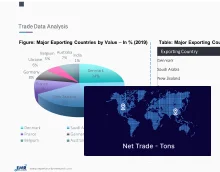
Get insights & trends for a competitive edge.
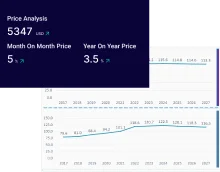
Track prices with detailed trend reports.
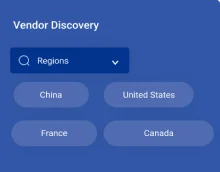
Analyse trade data for supply chain insights.
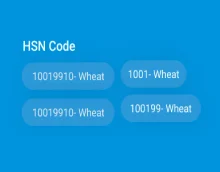
Leverage cost reports for smart savings
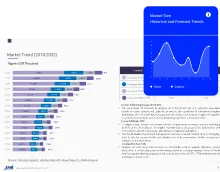
Enhance supply chain with partnerships.
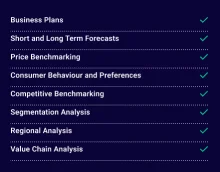
Connect For More Information
Our expert team of analysts will offer full support and resolve any queries regarding the report, before and after the purchase.
Our expert team of analysts will offer full support and resolve any queries regarding the report, before and after the purchase.
We employ meticulous research methods, blending advanced analytics and expert insights to deliver accurate, actionable industry intelligence, staying ahead of competitors.
Our skilled analysts offer unparalleled competitive advantage with detailed insights on current and emerging markets, ensuring your strategic edge.
We offer an in-depth yet simplified presentation of industry insights and analysis to meet your specific requirements effectively.
Share